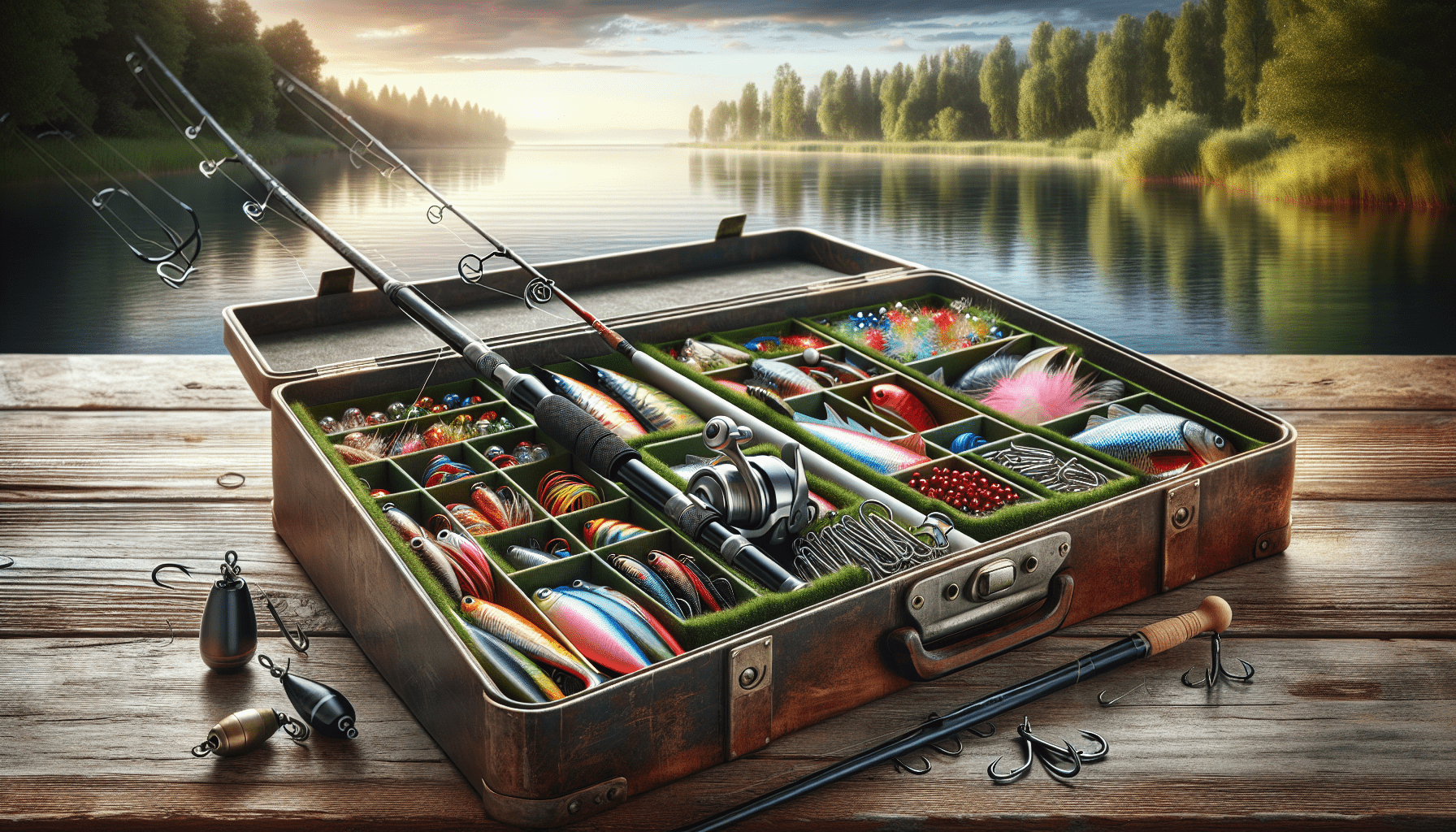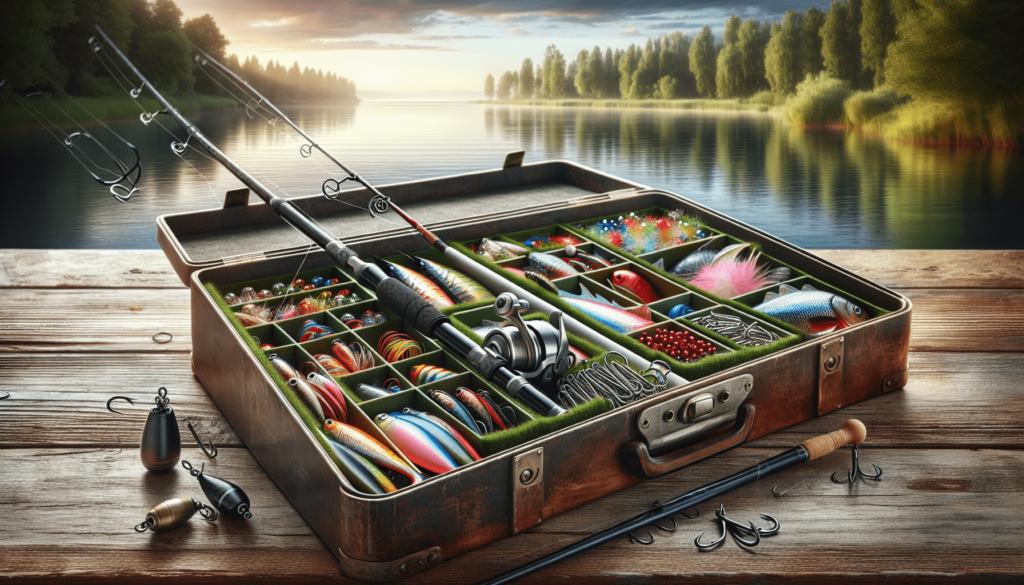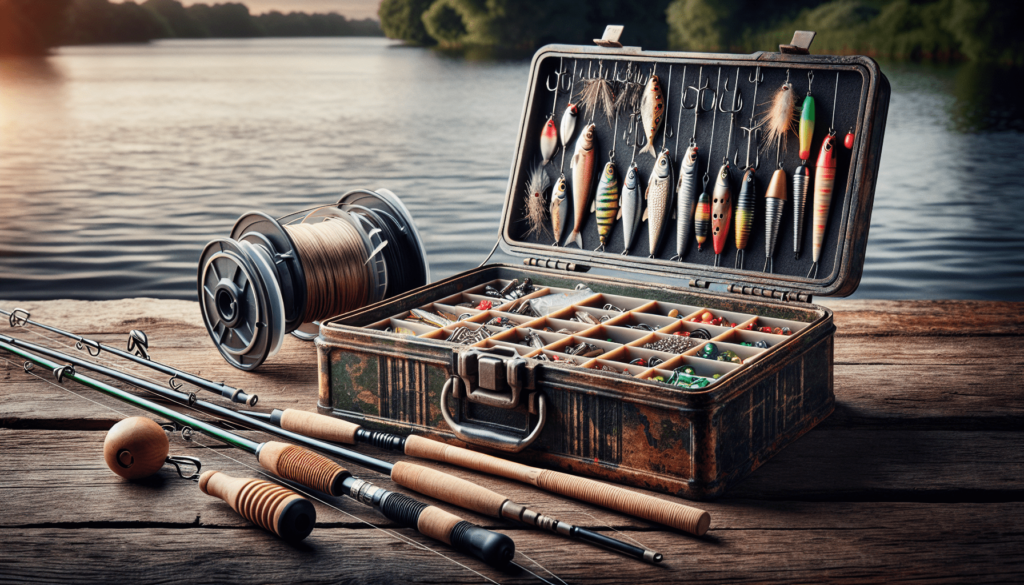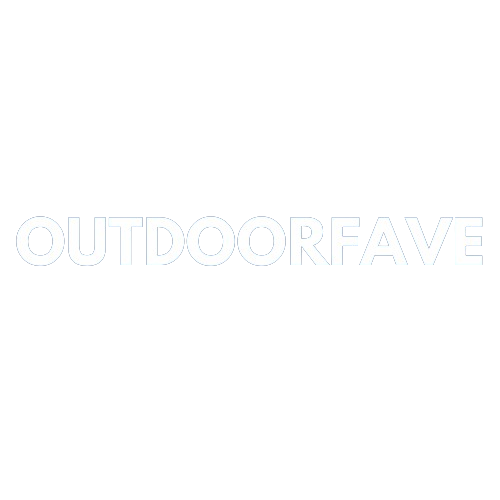
Hey friends! In our joint quest to make the most of our fishing adventures, we’ve discovered some must-have items that can truly transform the experience. In “10 Essential Fishing Gear Items,” we take a closer look at the gear that we believe every angler should have in their tackle box. From reliable rods to top-notch tackle, let’s dive into this comprehensive list to ensure our next fishing trip is nothing short of successful and enjoyable for us all. Have you ever wondered what fishing gear is absolutely essential for a successful trip? Whether we’re seasoned anglers or just getting our feet wet, it’s easy to feel overwhelmed by the sheer number of fishing tools and gadgets available. Don’t worry; we’re here to guide you through the essentials so you can hit the water with confidence. In this article, we’ll discuss the 10 essential fishing gear items we need for a fantastic fishing experience.

1. Fishing Rod and Reel
The cornerstone of any fishing adventure, a quality fishing rod and reel combo is essential. We need to select the right type depending on the kind of fish we’re targeting and the fishing environment.
Choosing the Right Rod
Fishing rods come in various lengths, materials, and actions. Generally, a medium action rod between 6-7 feet is versatile enough for most fishing scenarios. For specific fishing like fly fishing or deep-sea fishing, we’ll need specialized rods.
| Type of Rod | Best For |
|---|---|
| Spinning Rod | Versatile; ideal for beginners |
| Baitcasting Rod | Precise casting; for experienced anglers |
| Fly Rod | Fly fishing in freshwater streams |
| Surf Rod | Beach or shoreline fishing |
Selecting the Reel
There are two main types of reels: spinning and baitcasting. Spinning reels are user-friendly, making them great for beginners, while baitcasting reels offer more precision and control, catering to more experienced anglers. Ensure that the reel matches the rod for the best performance.
2. Fishing Line
Our fishing line connects us to the fish, and it’s vital to choose the right kind. Fishing lines come in different types and strengths, each suited for various environments and fishing techniques.
Types of Fishing Lines
The three main types of fishing lines are monofilament, fluorocarbon, and braided.
| Type | Characteristics | Best For |
|---|---|---|
| Monofilament | Stretchy, good knot strength, affordable | General-purpose fishing |
| Fluorocarbon | Less visible underwater, abrasion-resistant | Clear waters and wary fish |
| Braided | Strong, no stretch, high sensitivity | Heavy cover and deep-sea fishing |
When choosing a fishing line, consider the fish size and type, water conditions, and our personal skill level.
3. Tackle Box
A well-organized tackle box is a fisherman’s best friend. It keeps all our fishing gear neatly arranged and easily accessible.
Must-haves in Your Tackle Box
Ensure our tackle box has the following essential items:
- Hooks: Various sizes for different types of fish.
- Sinkers: To help our bait sink to the desired depth.
- Swivels: Prevent line twisting.
- Bobbers: Indicate when a fish bites.
- Lures: Different types for different fishing conditions.
Depending on our fishing style, we might need additional items like pliers, line cutters, and a fishing license.
4. Bait
Bait is crucial for attracting fish. There are two main types: live bait and artificial lures. Our choice will depend on the type of fish we’re targeting and personal preference.
Live Bait
Live bait includes worms, minnows, and insects. They are highly effective due to their natural smell and movement. However, they require proper storage and handling.
Artificial Lures
Artificial lures mimic the appearance and movement of prey fishes. There are various types like crankbaits, jigs, and soft plastics. They are reusable and versatile but require some skill to use effectively.
| Type of Bait | Pros | Cons |
|---|---|---|
| Live Bait | Highly effective, natural | Needs storage, can be messy |
| Artificial Lures | Reusable, variety available | Requires skill, can be expensive |

5. Fishing License
In most places, we are required by law to have a fishing license. It ensures that we’re fishing responsibly and contributing to conservation efforts.
Obtaining a Fishing License
Getting a fishing license is usually straightforward. We can often purchase one online, at a local fishing store, or through a governmental agency. Remember to check the regulations for the specific area we’re fishing in, as rules can vary widely.
6. Fishing Clothing
Dressing appropriately is crucial for a comfortable and safe fishing trip. Proper fishing clothing protects us from the elements, helps us blend into the environment, and keeps us comfortable for long periods.
Essential Fishing Clothing Items
- Hat: Protects our face from the sun and reduces glare.
- Gloves: Protect our hands from cuts and the sun while providing a better grip.
- Sunglasses: Polarized sunglasses reduce glare and help us see into the water.
- Waders and Boots: Essential for fly fishing or fishing in cold waters.
- Weather-Appropriate Clothing: Dress in layers, use waterproof jackets, and wear UV-protected clothing.
7. Fishing Knife
A reliable fishing knife can be indispensable. We use it for cutting lines, preparing bait, and cleaning fish.
Types of Fishing Knives
Fishing knives come in various shapes and sizes, each suited for different tasks:
- Fillet Knife: Flexible, sharp blades ideal for cleaning fish.
- Multi-tool Knife: Versatile, includes pliers and other handy tools.
- Gut Knife: Short, sturdy blades for gutting fish.
8. First Aid Kit
Safety first! A first aid kit is essential for handling minor injuries and accidents that may occur during fishing.
What to Include in a First Aid Kit
A well-stocked first aid kit should include:
- Bandages and antiseptic wipes
- Gauze and medical tape
- Pain relievers (ibuprofen, acetaminophen)
- Tweezers (for removing hooks or splinters)
- Sunscreen and insect repellent
9. Fish Finder
Technology can be our friend, and a fish finder can significantly boost our chances of a successful catch. It uses sonar to locate fish, making our fishing more efficient.
How Fish Finders Work
Fish finders send out sound waves that bounce off underwater objects and return. The device then interprets these signals to display images of fish and the underwater terrain. There are different types of fish finders ranging from basic models to advanced systems with GPS and mapping capabilities.
10. Cooler
A good cooler helps keep our catch fresh and our beverages cold. It’s especially important if we’re planning to spend a whole day or more on the water.
Choosing the Right Cooler
When selecting a cooler, we should consider its size, insulation quality, and portability. Some coolers come with built-in features like fish rulers and multiple compartments for bait and fish.
Conclusion
Fishing can be a deeply rewarding activity, providing relaxation and the thrill of the catch. Having the right gear makes all the difference. By assembling these 10 essential items—fishing rod and reel, fishing line, tackle box, bait, fishing license, proper clothing, fishing knife, first aid kit, fish finder, and cooler—we set ourselves up for a successful and enjoyable fishing trip. So gear up, and let’s make our next fishing adventure the best one yet!





